Trigger Witch is a twin-stick shooter set in a fantasy world called Evertonia. I play as Colette, a young witch about to complete her training and join The Clip, a group of elite witches who defend Evertonia’s human populace from monsters. But these witches do not conjure fire and lightning to fight monsters.
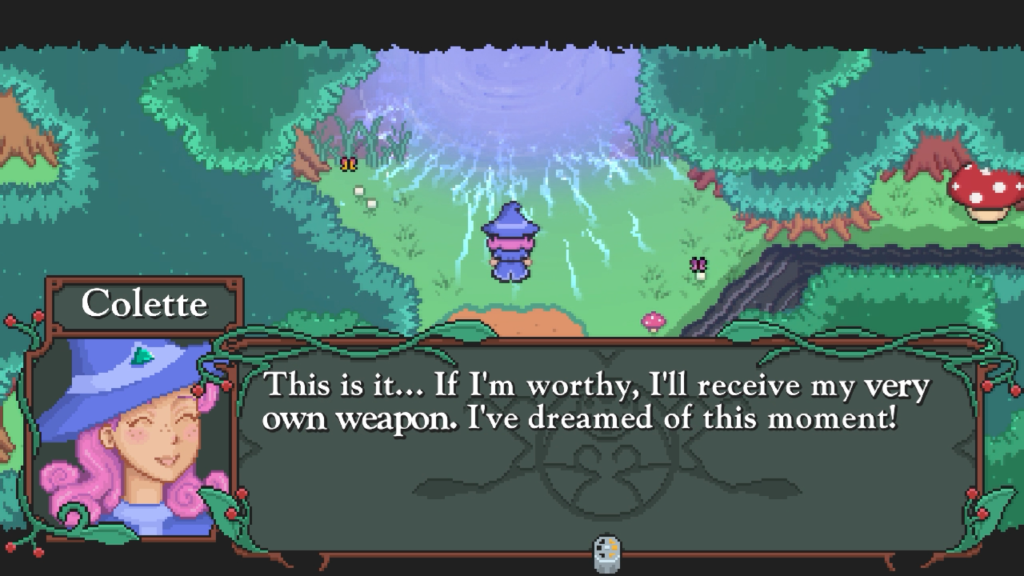
Years ago, a portal opened in Evertonia that periodically produces alien weapons that fire deadly metal projectiles. As witches relied more and more on these weapons, their skill in magic decayed. By the time Colette is ready to join The Clip, the power to smite a monster with elemental magic is dismissed as a quaint memory.
Colette is regarded as an especially talented witch-in-training, but when she visits the Ordnance Portal on her graduation day it produces more than just her first firearm. A sinister Man in Black emerges from the portal as well and disappears into territory held by the goblins, with whom the witches have a frosty relationship. Now an agent of The Clip, Colette sets out to find the Man in Black. Her adventure reveals surprising secrets about The Clip, the Ordnance Portal, and the witches’ fraught relationship with the goblins.

Trigger Witch is a mechanically familiar twin-stick shooter. I choose which gun or guns to equip Colette with and set out into an environment viewed from above. I move Colette with the left joystick and aim her weapon with the right. This parallel setup allows me to move Colette in one direction while firing in another, a mandatory skill as the screen floods with more and more enemies that try to chase Colette down. Some of the genre’s more fantastic excesses—the bottomless ammunition supply, the short dodge that grants brief invincibility—are explained as the last vestiges of magical power the witches have maintained, reduced to practical addendums to a firearm rather than a means of their own.
What sets Trigger Witch apart from other twin-stick shooters is its world. Evertonia is a vibrant fantasy world I can explore with near-impunity, impeded only by puzzles I solve with newly-discovered tools and barriers I remove by progressing the plot. I am always given a general idea of where Colette needs to go next, but the exact route to get there remains hidden. By exploring Evertonia’s cliffs, forests, and caves, I can forge my own path to Colette’s destinations, and probably discover empowering secrets along the way.
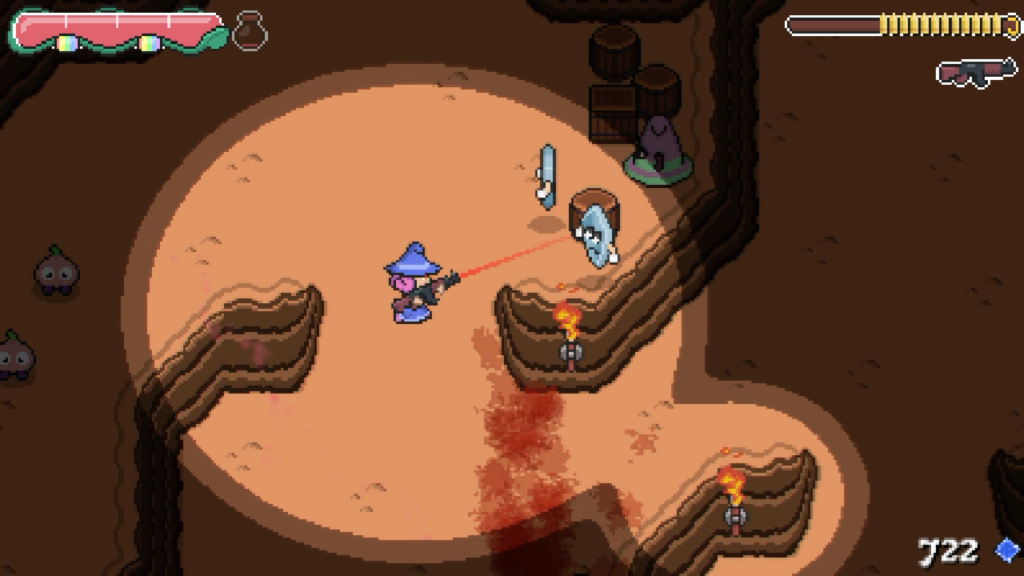
No matter where I travel in Evertonia, I fight off endless waves of enemies that swarm Colette. There’s a smart variety of enemies with synergized abilities, like floating shields that team up to create barriers around enemies with ranged attacks, but nothing can withstand the barrage of bullets Colette is capable of unleashing.
By the end of my ten hour playtime I’ve added a bevy of notorious firearms to Colette’s arsenal: Dual-wielded uzis, twin sawed-off shotguns, a flamethrower, an M-16, and several more. There are frankly more weapons available than I need. Most have little utility beyond “fires bullets” so which I use comes down to preference. I beat most of Trigger Witch using the first two weapons Colette discovers: the Hand Cannon (revolver) and Battle Blaster (AK-47). Several guns available later in the quest I don’t even fire once. I never feel a need to.
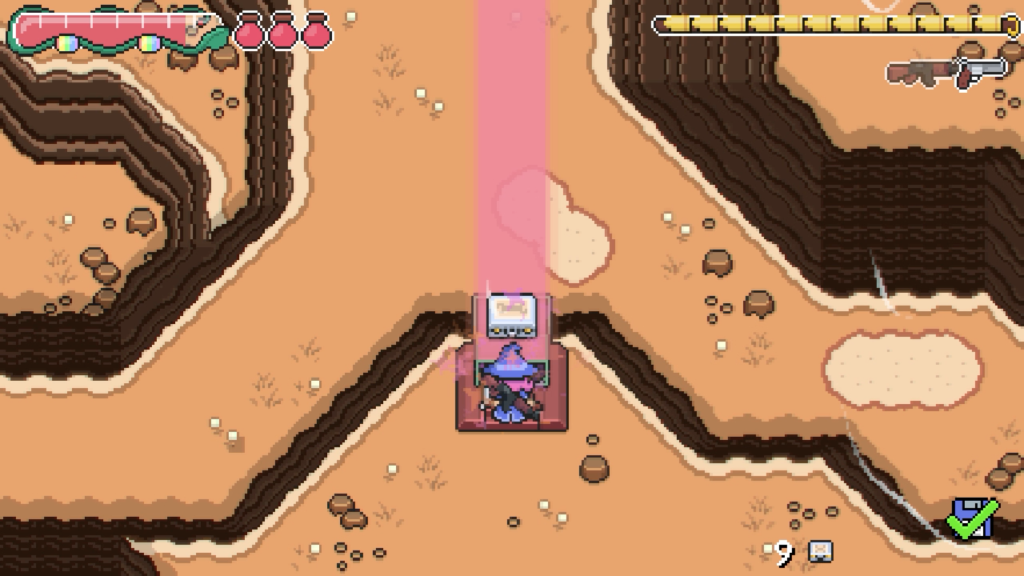
Colette’s guns are upgradable using resources I discover around Evertonia. Gun parts are hidden in chests which unlock customization options for each weapon. Enemies drop gems which can be traded to a gunsmith to enhance each weapon’s attributes. When fully upgraded, even Colette’s basic hand cannon can fire a flurry of powerful bullets that shred enemies with minimal reload time.With thorough exploration, I find more than enough resources to fully upgrade all Colette’s firearms. It would be more interesting if resources were scarce, forcing me to make tough decisions on which guns to upgrade. Since I end up not using most of the guns I upgrade anyway it doesn’t make much of a difference. I am left only with the pure pleasure of an achievement pop-up for one hundred percent completion after a thorough scouring of Evertonia for every hidden gun part.
Colette’s pursuit of the Man in Black takes her through seven dungeons. Each feels distinct, existing with a logical function in the world while also serving as an interesting place to explore and shoot monsters. A dragon menaces the munitions factory where witches craft the thousands of bullets Colette fires on her adventure. A hermit with vital knowledge lurks in a frigid cavern. A ghost hiding a tragic secret haunts a magically darkened castle. Only by exploring every room and hallway for keys, gunning down thousands of monsters along the way, can I conquer each dungeon and face the bosses which protect them.
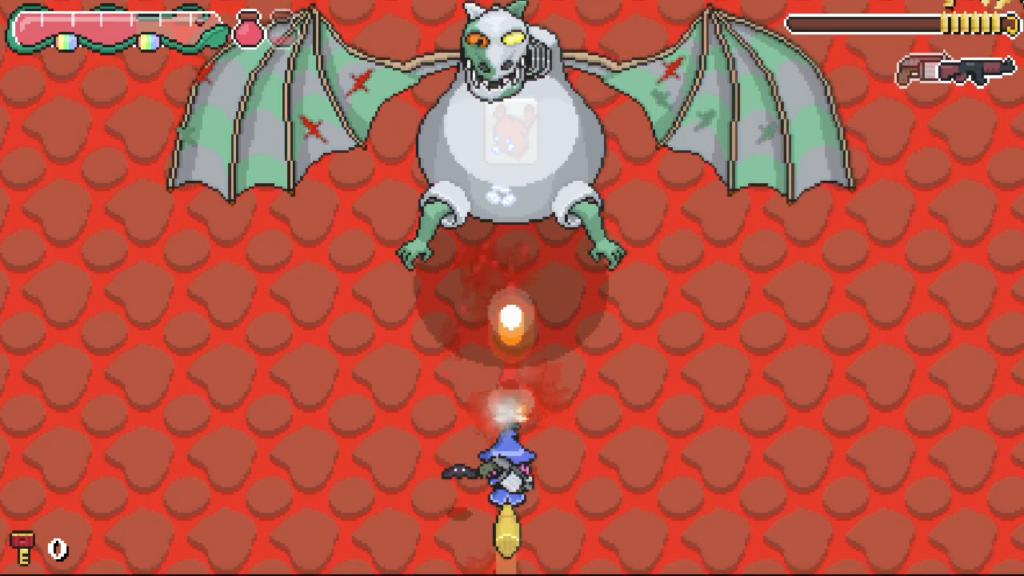
At the end of each dungeon I face a boss. With one or two exceptions, they are not memorable. By reviewing my capture footage to write this review, I recall a few details. A giant mole lurking under the ground that emerges when I shatter the gems that protect its face. A dragon fought on broomstick in a sendup of the shmup genre. A ghost only vulnerable when I lure it near a lit torch. There’s nothing mechanically wrong with any of these encounters. They still went in one eye and out the other.
The forgettable bosses are a consequence of a lack of challenge. They die before they have a chance to leave an impression. Standard enemies have a similar problem but offset it with sheer numbers. I beat Trigger Witch on the highest difficulty, discovering every secret and earning every achievement along the way, and I find myself wishing all along the way that it would stand up for itself a little more.
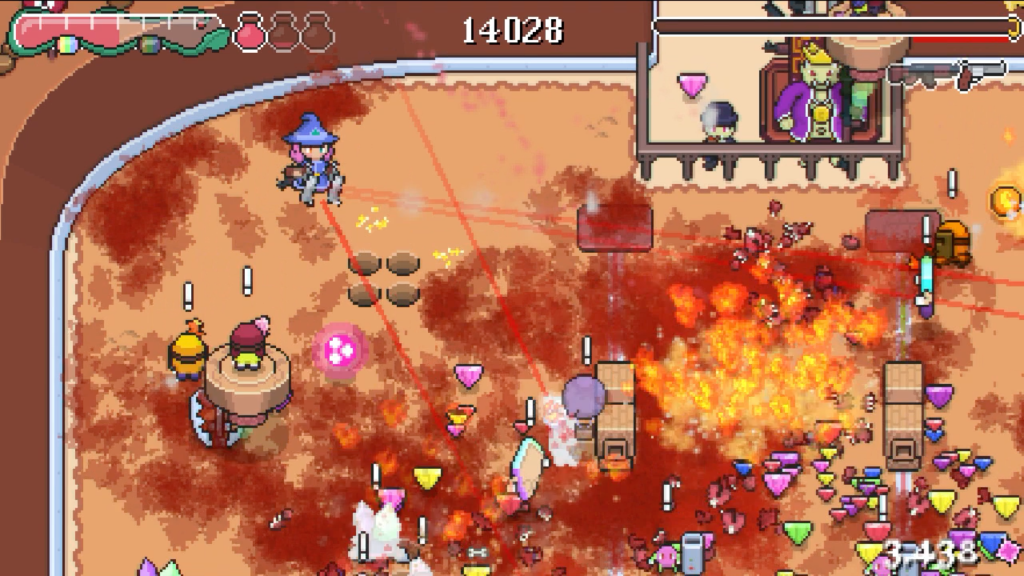
Most twin-stick shooters balance the euphoric power of mowing down thousands of monsters using guns with bottomless magazines by making the player character just as fragile as their enemies. A single mistake brings the power trip to an end. Colette is too resilient for me to feel my mistakes, especially with upgrades. After a few short hours she becomes an unstoppable goddess with more than three-quarters of her adventure still to finish. This experience is fun, which is all I need from a videogame, but without it making me feel a little pressure I think I will forget Trigger Witch quickly.
Or I would say that if not for the final absurd twist. After scouring all of Evertonia to find the Man in Black, Colette pursues him to the final dungeon’s end. Here he finally removes his hood, and I suddenly realize this is someone I know. What’s most impressive, once my confusion then my laughter wears off, is this twist actually makes sense by the standards of a videogame plot. It recontextualizes Trigger Witch’s setting as what a common videogame trope looks like when viewed from its other side. It does what any good twist does: Prompt me to reconsider everything I just experienced, making a revisit to that experience all the more rewarding. As forgettable as the other boss encounters may be, I’ll not soon forget Trigger Witch’s final boss. It alone is worth the price of admission.
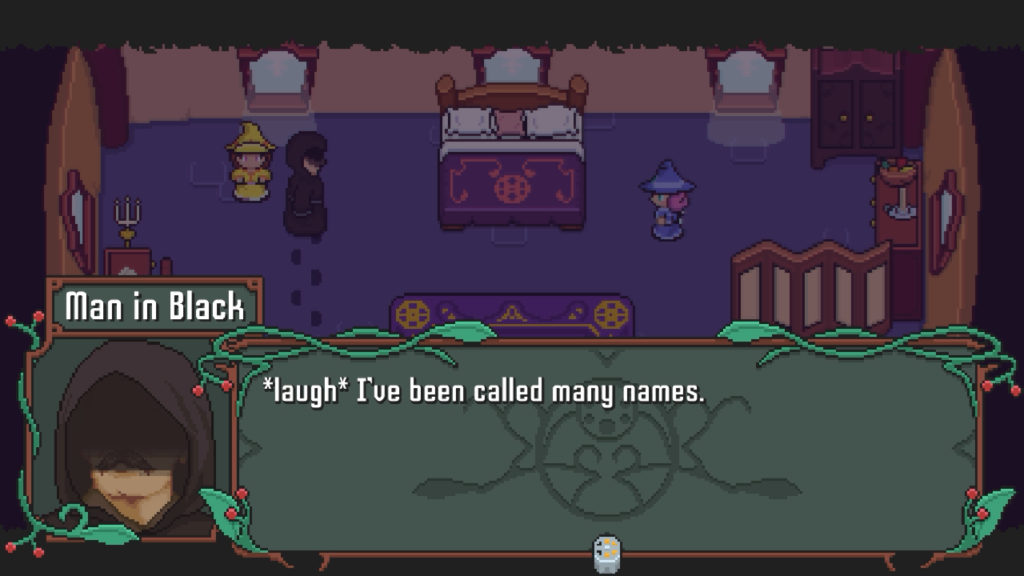
Trigger Witch is a good twin-sticker shooter. It has a great hook—a witch, with the requisite robe and pointed hat, but pointing a gun instead of a wand at her enemies. It has a fun twist on convention—a static, open world filled with secrets to discover, as opposed to the typical simple arcade or procedurally generated world. It’s let down by imbalance. Even on the highest difficulty, Colette is too powerful for her obstacles to leave an impression. Trigger Witch’s saving grace is its final twist, one I’m not likely to forget soon. Overall, it’s let down by difficulty and redeemed by novelty.